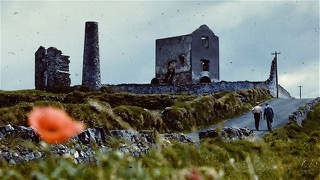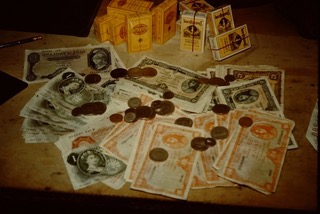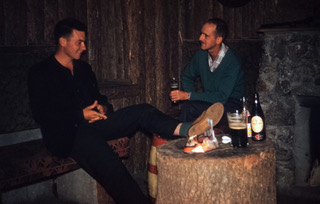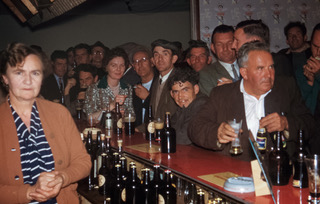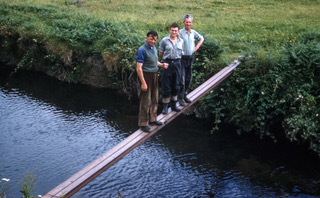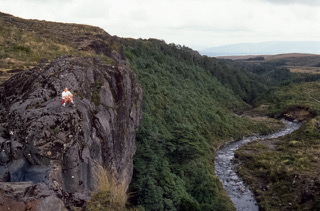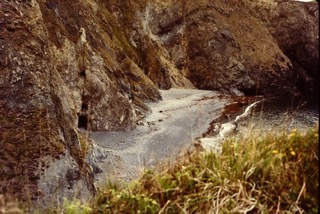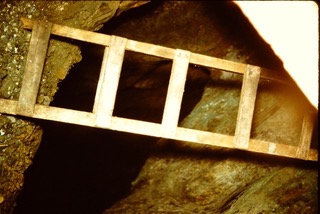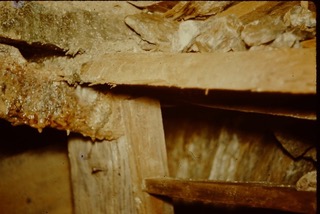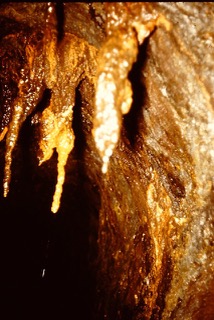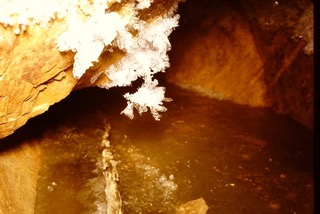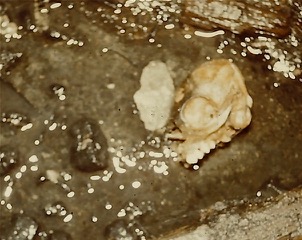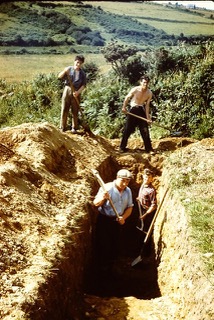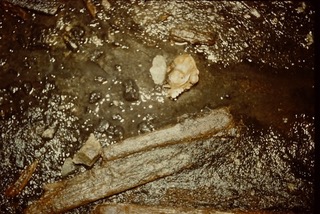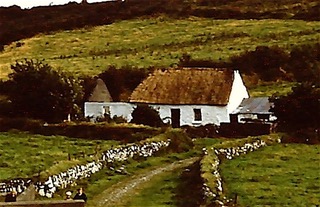Begin forwarded message:
From: Alan Skeoch <alan.skeoch@rogers.com>Subject: IRELAND 1960: “COW IN THE MINE,…OR SO I WAS TOLD.” IDate: March 6, 2018 at 10:51:20 PM ESTTo: Alan Skeoch <alan.skeoch@rogers.com>
Note: Only sending this to a few friends…sounds too self-obsessed…too much about me…too silly…but true hence the pictures. I cannot believe
that Barney and I took such risks but we did. Sense of immortality reserved for risk taking males when they are 22years old. Article is too long
for casual reading so I know some of you will press delete. Good. Do it. Why did I write this? Because my former boss, Dr. Paterson is writing a book aboutgeophysical prospecting in the 1950’s and he wanted some material that gives a little twist on the job. I sent him one short article. Then I wrote this whopper.
IRELAND, 1960: “COW IN MINE,…OR SO I WAS TOLD.”alan skeochMarch 2018Science says there are no ghosts. So would you believe folK stories told with no evidence? Ireland… IN the summer of 1960 a lot of stories were told.
“Protestants? We bricked them up in that old church.”“The pigs got a Nun…tangled up in her habit… all that was found was her shoes with feet inside.”“IRA men hid out in these old mine adits…lived here.”“Some think little people live in the old mine.”“A cow wandered into the mine, so the entrance was filled with rubble.”“We’re having a wake for him, he’ll be standing there.”“An IRA killer lives being that locked door in Kerwin’s pub, been there since Time of the Trouble.”“German bomber ditched in that field, the captain came back to see us last summer.”These are just some of the folk tales told to me in that summer of 1960. They are the stories I remember. There were a lot more thatI forgot. Read them again. How many would you believe? None? Well, one story turned out to be true and linked directly to ourgeophysical exploration of the ancient Knockmahon Mine.
The Knockmahon Mine closed in 1879. It was not a nice place to work…dangerous. Miners had to climb down a series of wooden ladders in the dark toreach the stopes far below..stopes that eventually extended out beneath the ocean. Even so, by 1840 the mine was said to be in ‘the most important mining district in the British Empire.” The cliffs of Knockmahon drew miners as far back at the 18th century and even deeper in the past. Lead, silver and especially copper drew mining
entrepreneurs big time in 1824, and by 1834 profits rolled in for a decade. Mining costs got higher and higher the deeper they went until the Knockmaon minewas abandoned. Where did all the miners go? They moved, all of them to North America. Were they Irish? No, Cornish families from abandoned Cornwall mines.What remains? This chimney and the ruins of the power house. Both stand as stone ghosts above the tiny Irish village of Bunmaon, County Warterford.What did they leave behind? Our company in 1960 hoped they left lots of residual copper. The local Irish hoped the mine would reopen and the regionbecome prosperous once again but that was not to be. There were anomalies…blips on our Turam receiving console. But the whole area is so badly faulted that no miningcompany had any prospect of profit. So the ghost remains.
PICTURE: Yes, parts of Ireland looks like this. Small whitewashed cottages and ancient graveyards with stones askew.
What story was true? THE COW IN THE MINE:
PICTURE: Some of our crew on the Irish job. John Hogan (left) and Dr. Joh Stam (far right), Barney Dwan (4th from left)We hired several others not in picture. One handicapped teen ager just guarded the motor generator all day, not worried about thieves but very worried about cows.
PICTURE: Payday … includes pack of cigarettes for each manPICTURE: John Hogan and i sharing a glass or Guinness in Kirwin’s pub.The Irish job was unusual. We were subcontracted by Dennison Mining Corporation to see ifthe ancient Knockmahon copper mine had any residual copper. The mine closed in 1879,had not been profitablesince the 1850’s but Knockmaon,in the 1840’s, had been one of the great mines of the British Empire. We arrived
more than a century later. We? Three of us, John Hogan, a geologist employed by Dennison Mines, Dr. John Stam, a Dutch/Canadiangeophysicist, and me, a University of Toronto student whose job was to climb through the brier, push asidethe semi wild hogs with those lethal jaws, climb the stone fences,.. Avoid the ticks that covered the cows noses…and GET THE NUMBERS.For many moments I felt like John Wayne, as in ” The Quiet Man “ which was running forever in a Dublin movie theatre. That movie was my introduction to old Ireland. Could the County Waterfordbe anything like that? No! Impossible! Wrong. It was exactly like the Quiet Man including the Catholic priest’s concern for his flock and red headed colleens livingin turf covered cottages up the boreens.
Community life was centred around Kerwin’s pub during the week and the local Catholic church on Sundays. We got to know both places but spent moretime in Kerwin’s than at Mass. Plenty of black beer with brown foam spilling down the pint glasses. Guinness stout was new to me then but I got to know it well. Liked it.
It was in Kerwin’s one night that I first heard about the lost cow and the hidden mine entrance.“Did you lads get that machine to give you lots of pings up above Bunmahon?”“We call them anomalies…odd readings…I guess pings says it all.”“Anything happen…anything go bump or whatever that tin box does?”“We got something up there, yes “ Was I betraying some kind of secrecy by saying that?“I know there’s something there…all of us know.”.We had 12 or more employees and paid them less than$2 a day plus a pack of Wild Woobine Cigarettes as a bit of a bonus. Later I added chocolate bars.Big man. Egomaniac. My boss back in Toronto, Dr. Norman Paterson, wondered why I needed so many men. I had an answer but it was not quite true.We really waned to give some employment to the community.
“Dr. Paterson, I need four men to cut our lines, 2 men to guard the grounding rods from cattle and pigs, particularly the pigs, 1 man with the front coil,1 record keeper, 1 watching the motor generator, 2 men patrolling the base line to keep the dairy cows from eating the copper cable, 2 or 3 men to digtrenches where Dr. Stam thinks bedrock might be interesting, and 1 man
to lift me over the stone fences and through the thorny briar parches. Pay all of them a total of around $ 24 a day plus bonus…cheaper than cost of one man in Canada.”“Did you say bonus?”“Yes, every pay day…every week…I give each man a pack of Wild Woodbine cigarettes or a chocolate bar..”“Is this a joke?”
“Why do you needa man to lift you over the fences?”“Tiny fields here in Ireland…stone walled fences surrounded with dense brier hedges…impossible to get through without help…and keeps thecattle at a distance…ticks are ugly.”
“Are ticks really a problem?”“Cattle have their noses full of ticks…strip every night and check my body for ticks.”
PICTURE: DR. Stam autorized a crew to dig several deep trenches down to bed rock when a promising anomaly was found by our survey equipment.That attracted pigs as can be seen here. Free running pigs could be dangerous if a bore was present.
“And Dr. Paterson, sometimes I buy a round of beer for the lads in the evening.”“are you running some kind of popularity contest, Alan?”“Suppose so…influenced by John Wayne..”
“Have you seen the movie The Quiet Man? Great movie. Has had an effect on me. And it is very important to be on good termswith the community…public relaitons.”
I am not sure I said all this to Dr. Paterson but I was ready to do so. Years later when he asked me to tell his men’s club aboutthe Irish job he described me as being “precocious” whatever that means.Getting the trust of the community paid several dividends. One such was the ‘legend of the lost cow and the mine’PICTURE: This may be the boreen where the mystery adit was located.PICTURES: Adits to the old mine are located many place along this cliff face.John Hogan and Jon Stam went along with our adventures. See them above.Those hole are ADITS…horizontal mine ecavations used for air or as entrancesSHAFTS … are vertical excavations … to get deeper. We used the old adits and one venture into a shaft which we regretted.Barney Dwan was my Irish sidekick on the job. We were about the same age and had a similar devil may care love of life. At his suggestion wespent many evenings crawling in the old mine adits from the copper stained cliff faces that hung over the ocean. Dangerous beond belief reallyfor sometimes we were flat on stomachs wedging our bodies (then thin) across a four collapse or leaping over a narrow shaft filled with crystal clear waterthat had inched up from the ocean filled workings far below. The Knockmahon mine had been worked under the ocean some time between 1833 and the closing in 1870.Men had climbed down these shafts on long wooden ladders in the dark. In 1960 mine exploration any deeper than the adits would require scuba gear.Was there any justification for our risk taking? Not much. Although the walls of the adits were bright blue and green with copper staining and occasionally pinkwith what I thought might be cobalt. One of these water filled shafts even had an old ladder spanning its mouth. Was the ladder 90years old or was it left hereby Barney and his palls? I preferred the latter but crawled across it anyway. At the time I thought The worst that could happen was a cold swim. No danger of falling down hundreds feet or so to the old mine working below. Why? Because about 20 or so feet down was water. The old mine had been reclaimed by the sea. So if the ladder broke, I would fall a short distance and have a cold swim. My second thought was not so optimistic. How could I climb back up to the adit? Barney would haveto get a rope. And if we both fell? I put that thought aside. We were across the chasm.. Now and then we would stop and light a candle just to be sure there was enough oxygen to continue.PICTURE:A simple decision needed here. Should we cross this shaft on the ladder provided? Second question. How old is the ladder? Third question. How deep is the shaft…the oldmine working are supposed to be a hundred or more feet down. Fifth question. Do I see water about 20 feet down…think so. Then the mind must be filled with water.Sixth question. If the ladder is rotten and I fall down there, how long will it take Barney to get a rope and haul me out? Seventh question. Suppose we both fall downinto that water, who knows we are in here and who would launch a rescue? These questions seemed important at the time.On another of these explorations we gotourselves in serious trouble. We were slowly crossing a large open space with piles of football sized rubble. The space was angled down at about 30 degreesand may have been a deliberate slope that ore and rubble were sorted by hand by the miners wives and children. Our flashlight, however, did reveal some kindof iron contraption below where the cpen cavern like room narrowed down. We entered the slope from the adit about the mid point and were crossing it carefully to the other side wherethe adit continued. Big mistake! We loosened the boulder strewn incline and the whole face started to slowly slide to the hole below. We froze. Thoughts ofdeath intruded. Should we make a broken field run for the adit? Should we wait and hope the sliding talus slope would hang up onsome intrusion. Panic. Turn around? No time for that. We were riding a stony sea. Then the movement stopped and we got across to the other side. That evenshook Barney who seemed to have spent his teen age years crawling in and out of these old mine adits. “No wonder the IRA felt safe hiding in here.” Was Barneyputting me on again or was he speaking the truth? Got so I never really knew.PIICTURE: Not exactly stable“In the Time of the Trouble, people hid out in here,” Barney said“Time of the Trouble?”“1920’s when the Black and Tans were around.”“‘Black and Tans?”“The British.”The dark politics of Irish history took on a life of its own suddenly. The Time of the Trouble were years of killing by both sides. Irish nationalists versus British imperialists to oversimplify. When Barney spoke of those years he always had a lopsided grin…knowing with that grin that I was likely on the other side of the Union question.“See that old bricked up church?”“Abandoned?”“Filled with Protestants in the Time of the Trouble. They’re still in there.” And Barney grinned.Sick Humour between two 22 year olds who were notpart of those years of death and hate. My wise decision to attend weekly mass bridged that ideological chasm. fortunately. Everyone relaxed and toldfunny stories about those past years. Like the story about Kirwin’s pub. There was the main bar room …a low ceilinged tiny space filled with tankards andlong black beer pulls. Then there was the locked room. “What’s behind the door, Barney?” “Don’t go there.” “I saw shadows moving across the gap below the door..”“One of the killers lives there…old man now…touched in the head.” Killer? Barney inferred that a hatchet man for the IRA was firmly closeted behind that door.Was this true? I have no idea. Likely not for Barney had that lob side grin when he spoke. The village of Bunhahon was rife with stories like that. Twentieth century legends. Perhaps containing a kernel of truth. I know readers will have a hard time accepting these potentially hate filled stories. But they are part of the folk traditions.Which gets to the points of this article.Barney seemed serious one day…trying not to grin.“Master Skeoch” he called me that for some strange reason, “remember that story about the boreen we worked across today.”“Something about little green men, Barney”“No, although those stories are told as well.”‘Is that why few people crawl into the old mine adits?”“Suppose so. But I have a different story today…a real story…not that those other stories are not real.”“What story, Barney.?”“A long time ago…long before I was born…maybe back before the Time of the Trouble…after the mine had closed down …”“After 1870?”“Sometime after.”“the story about the farmer that lost a cow in one of the mine openings…It happened here in this boreen,” (this valley)“No openings here now.”“The farmer filled in the opening with piles of wild and rocks…still here.”“But where?”“right here beneath this patch of brier…story has been told again and again.”“Do you think we could open it up?”“We could…maybe find out if the pings in the tin box mean something.”“Good idea, if Dr. Stam agrees, we’ll hire one of the men to dig here for a couple of days…give him a pick and shoveland just let him work at it alone…worth a try.”So we put a man on the job and continued marching along our grid pattern checking for anomalies. Might have been two orthree days later that we got word about the hole. Our pick and shovel man hit the old mine entrance dead on target. Theadit … mine entrance… had filled up with water over the past century…tons and tons of water. At some point his pick orhis shovel released the pressure and a wall of muddy water exploded forth. Scared the shit out of him. As it would anyone working aloneand sceptical. He ran.By the next day the adit had drained enough for us to enter. This was not a small ventilation adit like those on the cliff face. It was a major opening. Perhaps seven or eight feet high and four or more feet wide. Once the draining got down to a trickle all of us walked in withflashlights and candles. The walls were slick with dirty brown chemical staining. No bright blues or greens or pinks. Perhaps under the slimethere were traces of copper but I don’t remember any. Of course our attention was riveted on something else. She was there…in place…exactly as the legend said. About 100 feet into the opening there was the cow.Her body was wedged into a narrow point. Hips must have got caught and she died there. Her skull was facing into the mine, her arse facing out. Just bones.of course.Sceptics on our crew said that she was dumped here long ago. She died in a field or stable and then was buried here. Possible. But doubtful. The skeletons ofanimals along with broken furniture and piles of old bottles were dumped in the mine shafts not in the adits. Easier to do that. The main shaft where the oldbuildings still stood had a wide shaft totally plugged with garbage and dead animals. This was different. It had the cow exactlhyin place.John Hogan checked the geology and did not notice anything remarkable. I too ka few pictures of the brown slime walls the bones of the cow and a perfectcollection of crystal stalactites that must have taken 90 years to form in the stillness and utter blackness of this place.
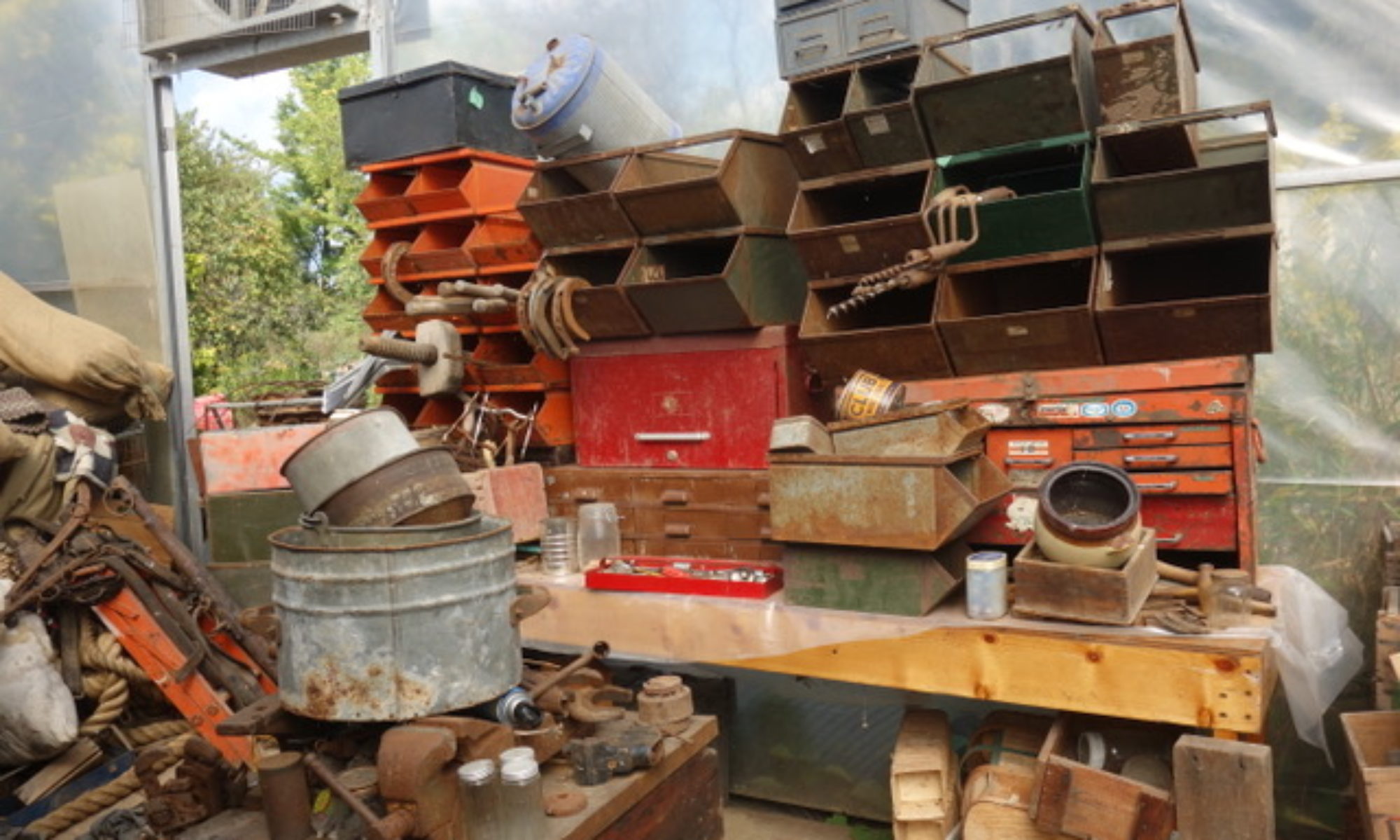
Alan's Oeuvre
